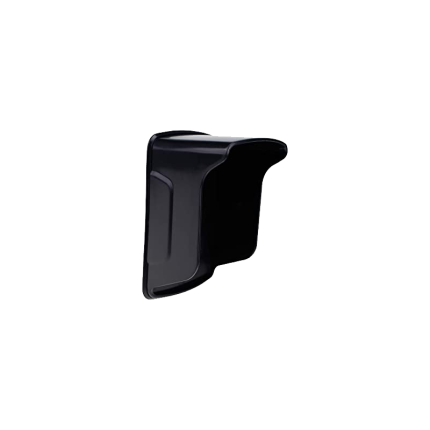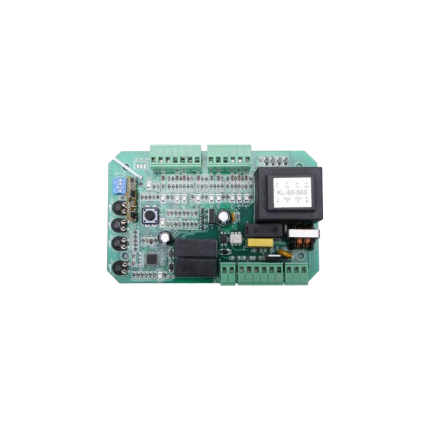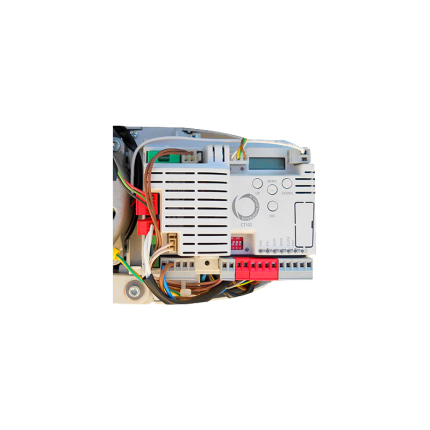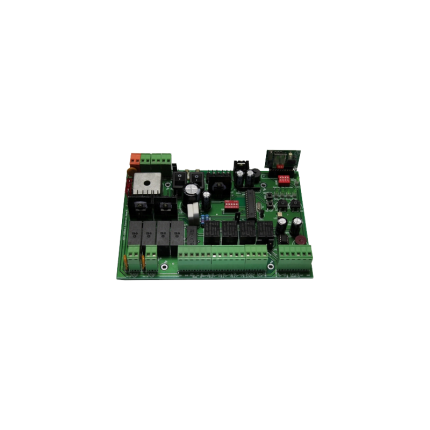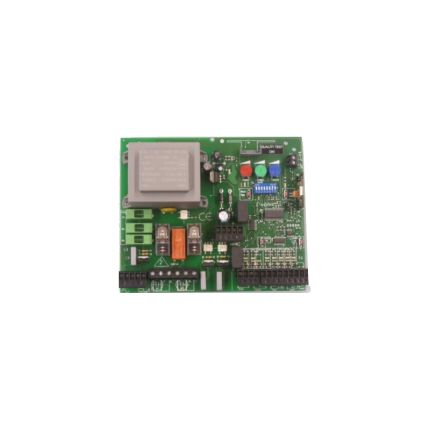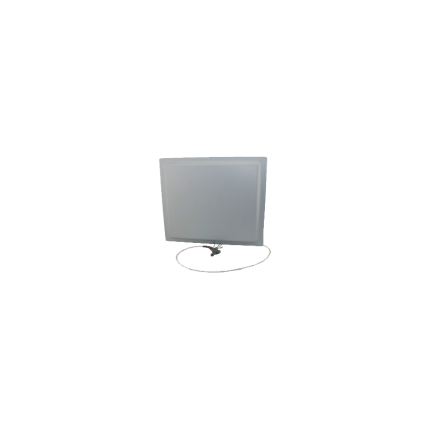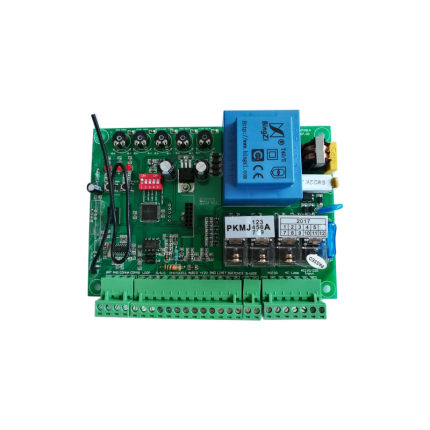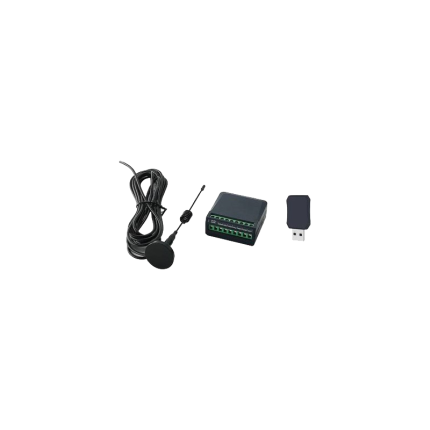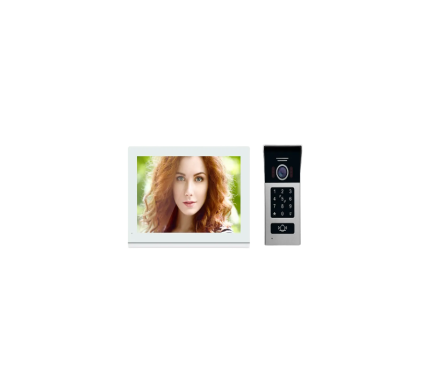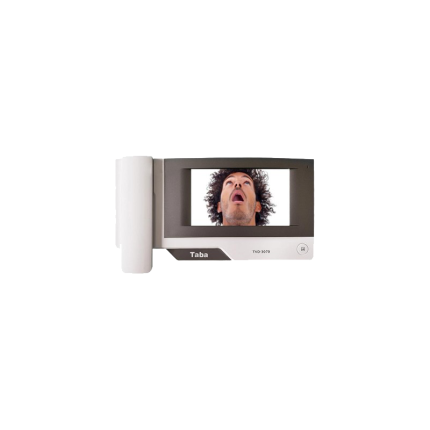controller
Rain Shield Cover
Ship or pick up from our office.
Rain Shield Cover
Common Applications:
-
Doorbell systems:Protects the doorbell from rain and sun, ensuring it remains functional and visible.
-
Keypad access control systems:Shield the keypad from the elements, preventing malfunctions and ensuring accurate operation.
-
Fingerprint access control systems:Protects the fingerprint sensor from rain and sun exposure, ensuring accurate biometric readings.
-
Standalone RFID door access controllers:Shield the controller from weather elements, ensuring reliable access control.
-
Attendance machines:Protects the machine from rain and sun, ensuring accurate timekeeping records.
Sliding gate operator main control board – Difermatic
Ship or pick up from our office.
Sliding gate operator main control board – Difermatic
The main control board for a Difermatic sliding gate operator, such as the DSL600, acts as the "brain" of the system, managing all the gate's functions.
It receives commands from remote controls or other inputs, and then controls the motor to open and close the gate. It also manages safety features like obstacle detection and may allow for adjustments to speed, force, and other parameters.
Key Functions:
- Receives and Processes Commands: The control board receives signals from remote controls, keypads, or safety sensors.
- Controls the Motor: It sends instructions to the gate's motor to open or close the gate based on the received commands.
- Manages Safety Features: Many control boards include safety features like obstacle detection (which can reverse the gate's direction if it encounters an obstruction) and slow-down functions.
- Adjustable Settings: Some models allow for adjustment of speed, force, and other parameters.
- Power Supply: The control board typically operates on a 24V power supply.
Specific to Difermatic:
- The Difermatic DSL600 is a 600kg sliding gate opener, indicating the weight capacity of the gate it's designed to handle.
- Difermatic products are known for their Italian design and quality.
- The control board likely has features like remote control operation, safety mechanisms, and adjustable speed and force settings.
Additional Notes:
- Many sliding gate control boards, including those from Difermatic, are designed for easy installation and user-friendly operation.
- They often include a built-in receiver for remote controls and may be compatible with other accessories like photocells and alarm lamps.
- Some control boards also feature automatic closing functions and can be programmed for various delay times.
Sliding gate operator main control board – Key Automation
Ship or pick up from our office.
Sliding gate operator main control board – Key Automation
The main control board for a Key Automation sliding gate operator, like the SUN7224 or SUN11024, is the central processing unit that manages the gate's movement, safety features, and other functionalities.
It receives signals from remote controls, keypads, or sensors, and then directs the motor to open or close the gate accordingly.
Here's a more detailed explanation:
-
Core Function:The control board acts as the "brain" of the gate system, interpreting signals and controlling the motor.
-
Input:It receives signals from various input devices, such as remote controls, keypads, or safety sensors.
-
Output:It sends commands to the motor to start, stop, reverse, or adjust its speed based on the input received.
-
Safety Features:Many control boards include safety features like obstacle detection, which can automatically stop or reverse the gate if it encounters an obstruction.
-
Programming and Diagnostics:Some control boards offer programming capabilities and diagnostic displays to simplify setup and troubleshooting.
-
D-Track Technology:Some Key Automation models, like the Deimos, utilize D-Track technology for precise torque management and impact detection.
-
Power Supply:Control boards typically operate on a specific voltage (e.g., 24V DC or 110V AC).
Sliding gate operator main control board – VDS
Ship or pick up from our office.
Sliding gate operator main control board – VDS
The VDS SIMPLY sliding gate operator's main control board is the central unit that controls the operation of a sliding gate, typically one that weighs up to 600kg.
It's made by VDS Automation, an Italian company known for its gate automation products.
This control board manages functions like opening and closing the gate, potentially adjusting speed and force, and integrating with accessories such as keypads and safety sensors.
-
Central Control:The control board acts as the brain of the gate, receiving signals from remote controls or other input devices and translating them into actions for the gate's motor and other components.
-
Remote Control Integration:It typically includes a built-in radio receiver that can be programmed to work with VDS remote controls.
-
Safety Features:The control board can manage safety mechanisms like anti-squashing systems and potentially adjustable speed and force settings.
-
Easy Installation and Programming:The VDS SIMPLY control board is designed for easy installation, often featuring pre-wired components and straightforward programming.
-
Optional Accessories:It can be integrated with optional accessories like keypads, safety sensors, and other components to enhance functionality.
-
Durability:The control unit is often housed in a box with an air-stop seal to protect it from moisture and insects, and the mechanical parts may be lubricated with lithium grease for longevity.
-
Italian Manufacturing:VDS (Simply SL110) is specifically mentioned as an Italian-made control board, emphasizing quality and reliability.
Sliding gate operator main control board – Zero
Ship or pick up from our office.
Sliding gate operator main control board – Zero
The sliding gate operator main control board (also referred to as a PCB or circuit board) is the central component that manages all the functions of an automatic sliding gate system.
It acts as the "brain" of the gate, receiving signals from various input devices (like remote controls, keypads, or safety sensors) and translating them into actions for the gate's motor and other components.
Here's a more detailed breakdown:
1. Central Control: The control board is the central hub for all gate operations. It receives signals from different sources, such as:
- Remote controls: For opening and closing the gate.
- Keypads: For authorized access.
- Safety sensors: To detect obstructions and prevent accidents.
- Other accessories: Such as loop detectors, intercom systems, etc.
2. Signal Processing: The control board interprets the signals it receives and determines the appropriate action for the gate.
3. Motor Activation: Based on the processed signal, the control board sends instructions to the gate's motor to either open or close the gate.
4. Adjustable Settings: The control board often allows for adjustments to various parameters, including:
- Gate speed: The speed at which the gate opens and closes.
- Opening and closing timers: To control the duration of the gate's movement.
- Safety features: Including force adjustments, obstacle detection sensitivity, and slow-down settings.
Swing gate operator control board SWRG110
Ship or pick up from our office.
Swing gate operator control board SWRG110
The SWRG110 is a universal swing gate operator control board designed to manage the operation of AC (Alternating Current) powered swing gate motors. It's essentially the "brain" of a swing gate automation system, responsible for controlling the gate's movement, safety features, and integration with various accessories. It's often marketed as a replacement or upgrade board due to its broad compatibility with different AC swing gate openers, particularly those operating at 110V or 220V. Key Features and Functionality The SWRG110, as a universal control board, typically offers a range of features for efficient and safe gate operation:- Motor Control: It manages the power supply and direction of one or two AC gate motors, allowing for opening and closing cycles. It can be used for both single and double swing gates.
- Soft Start/Stop: This feature ensures a smooth and gradual acceleration and deceleration of the gate, reducing wear and tear on the motor and mechanical components, and providing quieter operation.
- Obstacle Detection: A crucial safety feature, obstacle detection allows the gate to stop or reverse if it encounters an obstruction during its movement, preventing damage to the gate, vehicle, or injury to people or pets. This is often achieved through current sensing or external safety sensors like photocells.
- Automatic Close: This function allows the gate to automatically close after a set period of time, enhancing security and convenience.
- Limit Switches: The board interfaces with limit switches (often magnetic or mechanical) to define the full open and full closed positions of the gate, ensuring precise stopping.
- Remote Control Learning: It typically has a learning function to pair with wireless remote controls, allowing users to open and close the gate from a distance.
- Accessory Interfaces: The SWRG110 provides terminals for connecting various gate accessories, such as:
- Photocells/Infrared Sensors: For enhanced safety and obstacle detection.
- Warning Lights: To signal gate movement.
- Keypads/Intercoms: For controlled access.
- GSM Modules/Phone APP integration: Some versions may offer connectivity for remote control via smartphone.
- Wall Buttons: For manual operation from inside the property.
- Exit Wands/Vehicle Sensors: To automatically open the gate for exiting vehicles.
- Adjustable Settings: Many control boards like the SWRG110 offer adjustable parameters, such as:
- Motor power/force (especially for obstacle detection sensitivity).
- Slowdown speed.
- Automatic close timer.
- Working time for each motor.
- Diagnostic Display: Some models include an LED or LCD display for easier setup, programming, and troubleshooting of errors.
- AC Powered Motors: Specifically, 110V or 220V AC swing gate motors. It's not compatible with DC (12V or 24V) motors.
- Various Gate Opener Models: It can replace control boards in numerous existing swing gate openers, such as some ALEKO and Lockmaster models.
- Power Disconnection: Safely disconnecting power to the gate opener.
- Wiring: Connecting the motor, power supply, and accessories to the appropriate terminals on the SWRG110 board. Understanding terminal functions is crucial for correct wiring.
- Programming: Learning remote controls and adjusting settings (e.g., limit switch calibration, auto-close time) according to the specific gate and desired operation.
Swing gate operator’s main control board – VDS & Difermatic
Ship or pick up from our office.
Swing gate operator main control board - VDS & Difermatic
The swing gate operator main control board is the central processing unit that manages all the functions of the gate opener.
It receives signals from remote controls, keypads, or safety sensors, and then translates these into actions for the gate's motor and other components.
Essentially, it's the brain of the gate operator, coordinating all its movements and safety features.
Here's a more detailed look at its functions:
-
Signal Processing:The main control board receives input from various sources like remote controls, keypads, or safety sensors.
-
Motor Control:Based on the input, it sends signals to the gate's motor to open or close the gate.
-
Adjustable Settings:Many main control boards allow for adjustments to settings like gate speed, opening/closing times, and safety features.
-
Safety Features:It manages safety mechanisms like obstruction detection, which stops or reverses the gate if it encounters an obstacle.
-
Access Control:It can manage access by integrating with keypads, intercoms, and other access control systems.
-
Power Management:The main control board manages the power supply to the motor and other components, including battery backup systems for power outages.
-
Communication:It can also communicate with other devices and systems, like alarm systems, for enhanced security.
-
Universal Compatibility:Some main control boards, like the SWRG24, are designed to be compatible with a wide range of swing gate openers and systems.
UHF Gate Controller
Ship or pick up from our office.
UHF Gate Controller
A UHF Gate Controller is a system that uses Ultra-High Frequency (UHF) Radio Frequency Identification (RFID) technology to manage and control access through a gate or designated entry/exit point. It typically consists of a UHF RFID reader, antennas, and a control unit that processes the data and triggers the gate mechanism. It's designed for automated, hands-free identification and tracking of people or objects equipped with UHF RFID tags, offering a longer read range and faster processing compared to other RFID frequencies. How it Works The fundamental principle of a UHF Gate Controller relies on the interaction between a UHF RFID reader and UHF RFID tags. Here's a breakdown:- UHF RFID Reader and Antennas: The gate controller incorporates a UHF RFID reader connected to one or more antennas. These antennas emit radio waves in the UHF frequency band (typically 860-960 MHz).
- RFID Tags: People, vehicles, or items needing access are equipped with UHF RFID tags. These tags contain a microchip that stores data (like a unique ID) and an antenna. Passive UHF tags, which are common in these systems, do not have their own power source; they draw power from the radio waves emitted by the reader.
- Data Exchange: When a tagged item or person enters the read range of the gate's antennas, the RFID tag is energized by the reader's radio waves. The tag then modulates these waves to send its stored data back to the reader.
- Data Processing and Control: The UHF RFID reader receives the tag's data and sends it to a control unit (often an integrated part of the gate system or a separate access controller). This control unit verifies the tag's information against a database of authorized entries.
- Gate Activation: If the tag is authorized, the control unit sends a signal to open or enable the gate (e.g., a barrier arm, turnstile, or door lock). If the tag is unauthorized, access is denied, and an alarm might be triggered.
- Directional Detection and Anti-Collision: Advanced UHF gate controllers can detect the direction of movement (e.g., entering or exiting) and employ anti-collision algorithms to read multiple tags simultaneously, even in high-traffic scenarios. Some systems use additional sensors (like infrared) to improve accuracy and prevent "tailgating."
- Long Read Range: Typically able to read tags from several meters away, allowing for "hands-free" and "drive-through" access.
- High Reading Speed: Can quickly identify multiple tags in motion, reducing bottlenecks.
- Anti-Collision: Algorithms that allow the reader to differentiate and read multiple tags present in the field at the same time.
- Directional Sensing: Ability to determine if an item or person is entering or exiting the controlled area.
- Integration Capabilities: Often connect with other security or management systems via interfaces like Ethernet, RS232, RS485, or Wi-Fi.
- Robust Design: Many are built for industrial or outdoor environments, with resistance to dust and water.
- Vehicle Access Control: Managing entry and exit for parking lots, gated communities, corporate campuses, and toll roads. Vehicles can have tags on windshields, allowing for seamless, hands-free access.
- People Access Control: Controlling access to buildings, restricted areas, and for time and attendance tracking in offices, universities, hospitals, and event venues.
- Logistics and Warehouse Management: Monitoring the flow of goods, pallets, and containers in and out of warehouses, distribution centers, and production lines for inventory management, asset tracking, and theft prevention.
- Retail: Used at store exits for Electronic Article Surveillance (EAS) to prevent shoplifting, and for inventory tracking as items move in and out of the backroom.
- Libraries and Document Management: Tracking books, documents, and other assets as they enter or leave a facility.
- Manufacturing: Monitoring materials and finished products on production lines and at factory entrances/exits.
Universal sliding gate operator control board SLRG24
Ship or pick up from our office.
Universal sliding gate operator control board SLRG24
The Universal Sliding Gate Operator Control Board SLRG24 is the "brain" of an automatic sliding gate system. It's designed to be a versatile replacement or core component for various DC-powered sliding gate operators, meaning it can control a wide range of motors and integrate with different accessories. Here's a detailed look at its features and significance: Core Function of a Control Board: The control board is the central electronic unit that:- Receives Signals: Interprets commands from remote controls, keypads, safety sensors (photocells, shock sensors, loop detectors), intercom systems, and other access control devices.
- Processes Logic: Decides what action the gate should take based on the received signals and its programmed settings (e.g., open fully, partially open for pedestrian, close, stop, reverse due to obstruction).
- Activates Motor: Sends the appropriate electrical signals to the gate motor to start, stop, or reverse its movement.
- Manages Accessories: Controls the power and operation of connected safety and convenience accessories like flashing lights, electric locks, and alarm outputs.
- Universal Compatibility: This is its defining characteristic.
- DC Motor Compatibility: It's designed to work with both DC 12V and DC 24V motors. This flexibility is crucial as many sliding gate operators use one of these DC voltages. It's important to note that it is NOT compatible with AC (Alternating Current) motors (like 110V or 220V AC motors).
- Limit Switch Flexibility: It can work with both spring-type mechanical limit switches and magnetic limit switches. This is a significant advantage for a universal board, as it means it can be used with a wider range of existing gate operators.
- Input Power: The board itself typically requires an AC 24V input power. This means it likely has an internal transformer or is designed to be powered by an external AC 24V transformer.
- Full Programmability: Offers a wide range of adjustable parameters, allowing customization of gate operation to suit specific needs:
- Gate Speed: Adjustment of how fast the gate opens and closes.
- Opening/Closing Times: Setting precise durations for gate cycles.
- Automatic Closing Time: Programming a delay before the gate automatically closes after opening (e.g., 15, 30, 45 seconds, or up to 3 minutes).
- Safety Settings: Integration and management of safety sensors (photocells, obstacle detection sensitivity).
- Pedestrian Mode: Ability to set a partial opening for pedestrian access.
- Party Mode: Often allows for temporary cancellation of auto-close for periods when many visitors are expected.
- Remote Control Capability:
- Features an integrated radio receiver, typically operating at 433.92MHz with rolling code technology. Rolling code prevents unauthorized cloning of remote controls, enhancing security.
- Supports multiple remote controls (e.g., up to 20 or more), making it suitable for larger families or multi-user environments.
- Accessory Output Power: Provides DC 24V accessory output power (e.g., 200mA max) to power various external devices:
- Safety Sensors (Photocells): Connects to and powers safety beams.
- Warning Flash Lights: Powers a flashing beacon that activates when the gate is in motion.
- Keypads/Intercom Systems: Provides power and input connections for wired access control devices.
- Electric Locks: Can manage the operation of an electric lock for added security.
- Safety Mechanisms:
- Obstacle Detection: Uses current sensing or other methods to detect if the gate encounters an obstruction during movement. Upon detection, it will typically stop or reverse the gate for safety.
- Automatic Stop Function: Ensures the gate stops precisely at its programmed limits.
- Short Circuit Protection: Often includes protection for output circuits (e.g., lock output) to prevent damage from wiring faults.
- Solar System Input: The mention of "Input Solar system" suggests it's designed to be compatible with or directly connect to solar charging systems for off-grid gate installations, making it suitable for rural properties or areas without easy access to AC power.
- Installation and Durability:
- Designed for relatively easy installation.
- Built with robust components for long-lasting performance in various weather conditions, though it usually requires housing in a waterproof box (often included in a kit).
- Features an automatic power-off memory function, retaining settings after a power outage.
- Replacing a Faulty Board: If an existing 12V or 24V DC sliding gate operator has a non-functional control board, the SLRG24 could be a suitable and cost-effective replacement, reducing the need to replace the entire gate motor.
- New Custom Gate Systems: It provides a flexible "brain" for custom-built sliding gate systems where the motor and other components are chosen separately.
- Solar-Powered Gates: Its solar input capability is a definite advantage for properties in Surrey or surrounding areas that might prefer or require solar power for their gate.
USB Gate Operator Remote
USB Gate Operator Remote
A USB gate operator remote control is a device that allows you to open and close automatic gates or garage doors by plugging a USB dongle into your car's USB port and using it as a remote. USB Gate Operator Remote emits a sensing signal upon receiving a command from the USB port, which then triggers the gate opener to open or close the driveway gate. Here's a more detailed explanation: -How it works: USB Dongle: The device typically includes a small USB dongle that plugs into your car's USB port. Sensing Signal: When the USB is plugged in and the car is in the "on" mode, the dongle emits a sensing signal. Receiver: The signal is received by a unit connected to the driveway gate motor. Gate Motor Activation: The receiver then activates the gate motor, causing the driveway gate to open or close. -Key features: Dual Control Modes: Some models offer both automatic and manual modes, allowing you to operate the gate either by proximity sensing or by pressing a button on the USB dongle. Compact and Portable: The USB dongle is small and lightweight, making it easy to use and store in your car. Easy Installation: It's designed for simple plug-and-play functionality, requiring no complex setup. Replacement Accessory: It serves as a convenient replacement for traditional gate remote controls.Video Doorbell B102
Ship or pick up from our office.
Video Doorbell B102
*Installing the smart video doorbell B102 using only one pair of wires.* Answer calls and unlock your door from your smartphone or other mobile devices
* Easily identify visitors on the large 7″ screen
* Store calls with no added fees using onboard memory
* Adding a microSD card to the on-site monitor increases call storage
* Watch recorded calls from the on-site master
Use Cases: The video doorbell B102 is a versatile security solution that can be used in a range of applications, including: 1. Private Residences: The intercom provides secure access control and entry monitoring for private residences, ensuring that only authorized persons gain access. 2. Commercial Properties: The video doorbell B102 intercom system is an ideal security solution for commercial properties such as offices, warehouses, and factories that require strict access control measures. 3. Retail Stores: The video doorbell B102 intercom can be used to control access to retail stores and prevent theft and unauthorized entry. 4. Gated Communities: The B102 video doorbell system is a valuable tool for gated communities that need enhanced security measures to protect their residents.Video doorbell TA2021
Ship or pick up from our office.
Video doorbell TA2021
A video doorbell, also known as a smart doorbell or doorbell camera, is an upgraded version of a traditional doorbell that incorporates a built-in camera, microphone, and speaker. It's connected to your home's Wi-Fi network and allows you to see, hear, and speak to visitors at your front door from anywhere using a smartphone app or other connected devices. Here are the key features and how they work:- Built-in Camera: This is the core feature, providing a live video feed of your doorstep. Most video doorbells offer high-definition (HD) video, and many include features like night vision (infrared or color) for clear viewing in low light.
- Motion Detection: Video doorbells are equipped with sensors that detect movement in front of your door, even if someone doesn't ring the bell. When motion is detected, you'll receive an alert on your phone. Many advanced models use AI to differentiate between people, pets, packages, and vehicles, reducing false alarms.
- Two-Way Audio: A built-in microphone and speaker enable you to have a real-time conversation with whoever is at your door, whether you're home or away. This is useful for speaking with delivery drivers, guests, or even deterring unwanted visitors.
- Remote Access (via App): Through a dedicated smartphone app, you can view the live camera feed, receive notifications, and communicate with visitors from anywhere with an internet connection.
- Recording and Storage: Video doorbells typically record footage when motion is detected or the doorbell is pressed. This footage can be stored either locally (e.g., on an SD card within the device) or in the cloud (often requiring a subscription service).
- Connectivity: Most video doorbells connect to your home's Wi-Fi. They can be either hardwired to your existing doorbell wiring for continuous power or battery-powered for easier wireless installation.
- Smart Home Integration: Many video doorbells can integrate with other smart home systems and devices, such as smart speakers (like Amazon Alexa or Google Assistant) or smart locks, allowing for a more connected and automated home security experience.
- Enhanced Security: Provides real-time monitoring of your front door, allowing you to see and record who comes and goes, deterring potential intruders and package thieves.
- Convenience: Answer your door and communicate with visitors from anywhere, without having to physically be home or get up to open the door.
- Peace of Mind: Know who is at your door, even when you're not there, and receive alerts about any activity.
- Evidence Collection: Recorded footage can serve as valuable evidence in case of a security incident.

